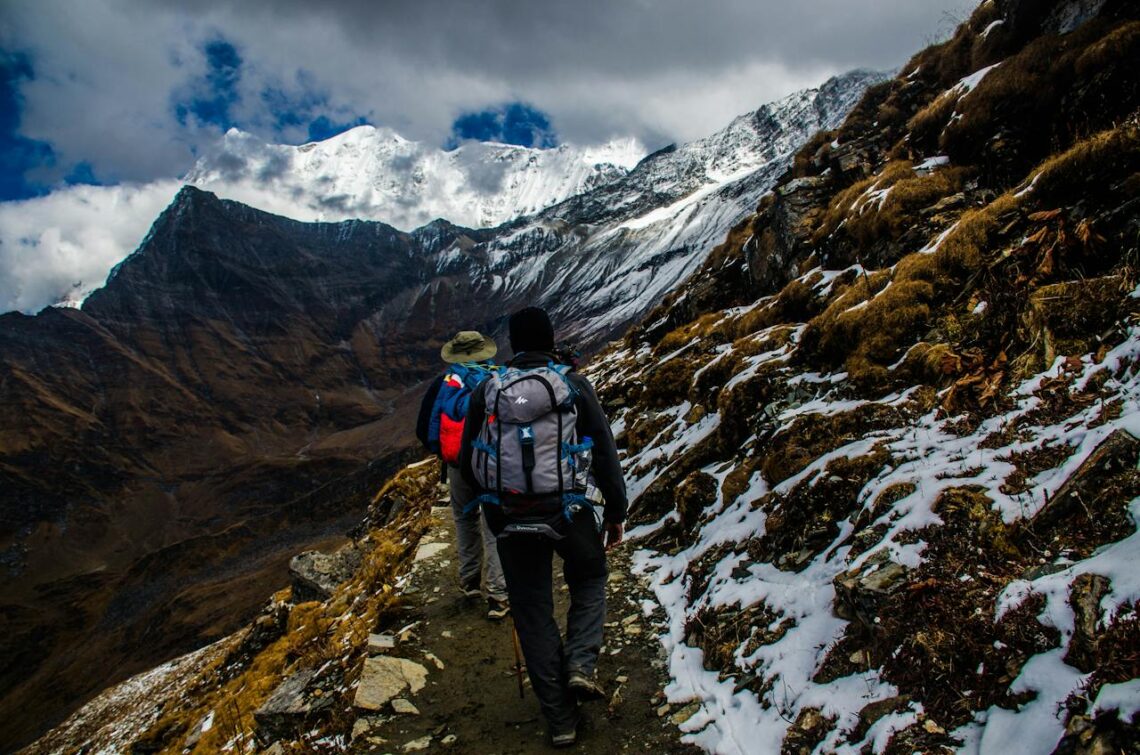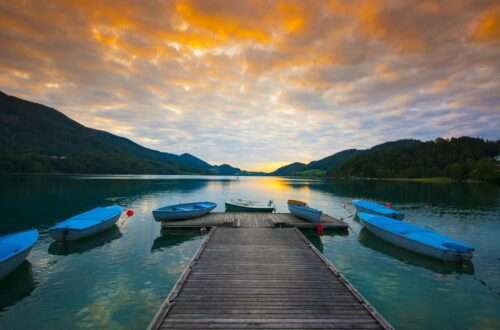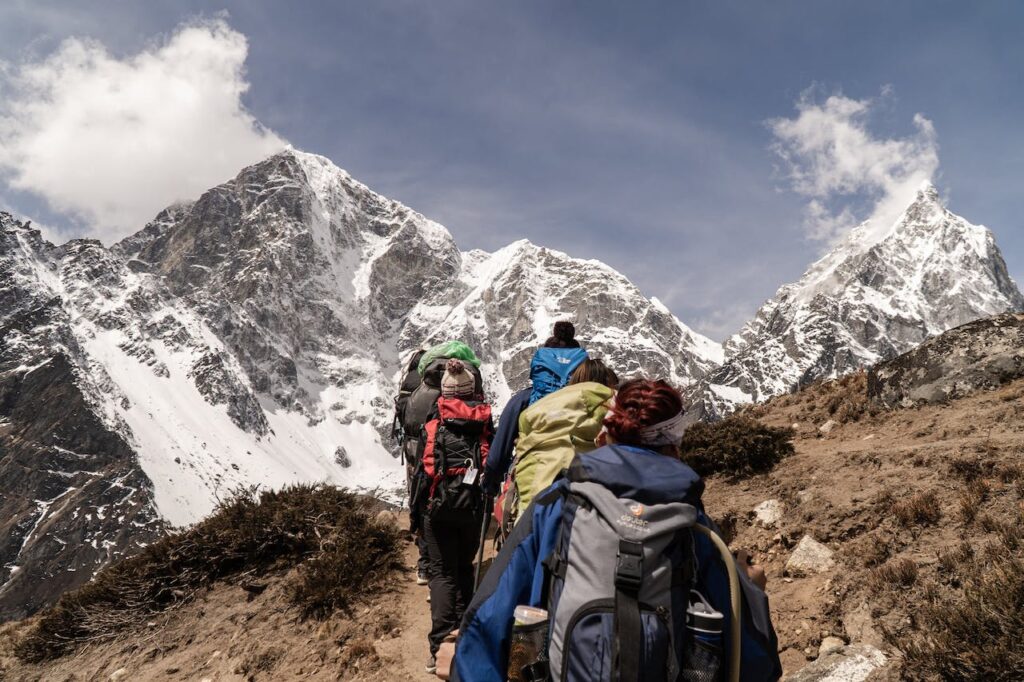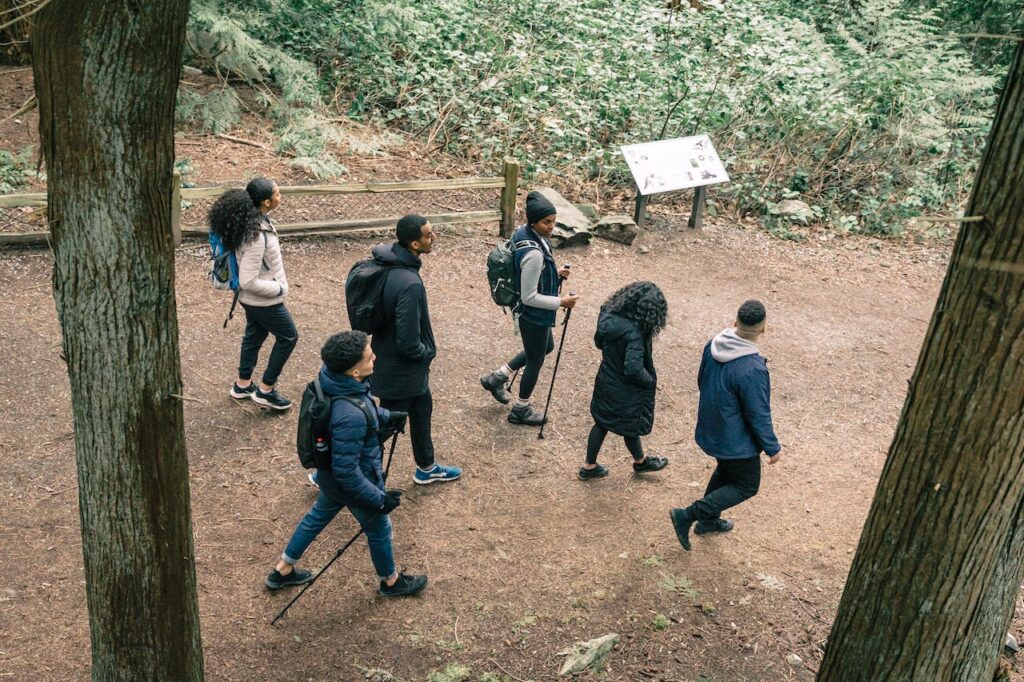
Top 5 Hiking Trails for Beginners in North India
North India is a region blessed with diverse landscapes, ranging from the towering peaks of the Himalayas to lush green valleys and dense forests. This geographical diversity makes it a haven for hiking enthusiasts. Hiking in North India offers a unique blend of natural beauty, cultural richness, and adventure.
From easy treks suitable for beginners to challenging trails for seasoned hikers, the region provides a plethora of options for exploring its breathtaking terrain. In this blog, we will explore the beauty of the Himalayas and immerse ourselves in the natural and cultural wonders of this enchanting region.
Key Regions for Hiking:
Himalayan Range: The Himalayas dominate the northern landscape, with states like Himachal Pradesh, Uttarakhand, and Jammu and Kashmir being popular trekking destinations. These regions boast numerous trails ranging from easy walks to challenging high-altitude treks.
Hill Stations: Many hill stations in North India, such as Shimla, Manali, and Mussoorie, serve as gateways to beautiful trekking routes. These areas offer a mix of scenic beauty, pleasant weather, and cultural experiences.
Valleys and National Parks: The picturesque valleys of Himachal Pradesh and Uttarakhand, including Parvati Valley and Har Ki Dun, provide enchanting trekking routes. National parks like Great Himalayan National Park offer opportunities to explore diverse flora and fauna.
Benefits of Hiking for Beginners:
Physical Fitness: Hiking is an excellent full-body workout. It engages various muscle groups, improves cardiovascular health, and helps in weight management. Beginners can start with easier trails and gradually progress to more challenging ones.
Mental Well-being: Spending time in nature has proven mental health benefits. Hiking allows you to disconnect from the hustle and bustle of daily life, reducing stress and promoting a sense of calm. The fresh air and scenic views contribute to overall well-being.
Low Cost and Accessibility: Unlike some sports or fitness activities that require expensive equipment or memberships, hiking is relatively low-cost. All you need is a good pair of hiking shoes and appropriate clothing. There are numerous trails suitable for beginners, making it an accessible activity for most people.
Social Interaction: Hiking can be a social activity, providing an opportunity to connect with friends, family, or fellow enthusiasts. Group hikes allow for shared experiences and camaraderie, making the journey more enjoyable.
Skill Development: Hiking introduces beginners to outdoor skills such as navigation, campcraft, and survival basics. Learning these skills not only enhances the hiking experience but also builds confidence in tackling different terrains.
Appreciation for Nature: Hiking offers a close encounter with nature, allowing beginners to appreciate the beauty of the outdoors. It fosters a sense of environmental awareness and encourages responsible outdoor practices.
Here are the top 5 hiking trails for beginners in North India:
Trail 1: Triund Trek (Himachal Pradesh):
Location: McLeod Ganj, Himachal Pradesh, India.
Difficulty: Easy to moderate, making it suitable for beginners.
Duration: Typically a 1-2 day trek, depending on the pace and starting point.
Best time to visit: The best time to undertake the Triund Trek is from March to June and September to November. During these months, the weather is pleasant, and the trail is accessible. It’s advisable to avoid the monsoon season and the winter months when the region experiences heavy rainfall and snowfall respectively.
Trail Highlights:
Scenic Beauty: The trek offers stunning panoramic views of the Dhauladhar range throughout the journey.
Diverse Flora: The trail winds through enchanting oak and rhododendron forests, providing trekkers with a diverse and rich natural experience.
Suitable for Beginners: With its moderate difficulty level, the Triund Trek is an excellent choice for those new to trekking. The well-marked path ensures a smooth experience for beginners.
Kangra Valley View: The summit of Triund provides a breathtaking view of the Kangra Valley. The effort put into the trek is rewarded by this mesmerizing panorama.
Camping Experience: Many trekkers choose to camp at the Triund top, enjoying the serene surroundings and starry nights. Camping adds an extra dimension to the overall trekking experience.
McLeod Ganj Exploration: Before or after the trek, visitors can explore McLeod Ganj, a vibrant town known for its Tibetan culture, monasteries, and the residence of the Dalai Lama.
Overall, the Triund Trek is a perfect blend of natural beauty, adventure, and accessibility, making it a popular choice for both beginners and experienced trekkers.
Trail 2: Nag Tibba Trek (Uttarakhand):
Location: Nag Tibba is located in the Uttarakhand region of India.
Difficulty: The Nag Tibba trek is considered ideal for beginners, offering a relatively moderate level of difficulty.
Duration: The trek usually takes around 2-3 days to complete. The duration may vary based on the starting point and the trekker’s pace.
Best time to visit: The best time to undertake the Nag Tibba trek is typically from October to April. During these months, the weather is conducive to trekking, and the trail is accessible. It is advisable to avoid the monsoon season and the peak winter months when the region experiences heavy rainfall and snowfall.
Trail Highlights:
Serpent’s Peak: Nag Tibba is often referred to as the ‘Serpent’s Peak,’ adding a mystical and intriguing element to the trek.
Ideal for Beginners: The trek is specifically designed for beginners who want to experience the beauty of the Himalayas without tackling extremely challenging terrains.
Dense Forests: The trail weaves through dense forests, providing trekkers with a lush and green environment along the way.
Snow-Capped Peaks: Throughout the trek, participants can catch glimpses of snow-capped peaks, adding to the scenic beauty of the journey.
360-Degree View: The summit of Nag Tibba offers a spectacular 360-degree panoramic view of major Himalayan peaks. This visual reward at the top is a significant highlight of the trek.
Accessible Yet Visually Rewarding: The trek strikes a balance between accessibility for beginners and the visual rewards it offers, making it a fulfilling experience for trekkers.
The Nag Tibba trek, with its moderate difficulty level, scenic beauty, and the promise of a stunning panoramic view from the summit, is an excellent choice for those new to Himalayan trekking. The trail’s features, such as the dense forests and snow-capped peaks, contribute to a memorable and visually pleasing trekking experience.
Trail 3: Kheerganga Trek (Himachal Pradesh):
Location: Kheerganga is located in the Parvati Valley, Himachal Pradesh, India.
Difficulty: The Kheerganga trek is generally considered to be of moderate difficulty, making it suitable for beginners with a reasonable level of fitness.
Duration: The trek typically takes around 2-3 days to complete, depending on the starting point and the pace of the trekker.
Best time to visit: The best time to undertake the Kheerganga trek is from May to November. During these months, the weather is pleasant, and the trail is open and accessible. It’s advisable to avoid the winter months when heavy snowfall can make the trek challenging.
Trail Highlights:
Introduction to Trekking: Kheerganga is often recommended as a delightful introduction to the world of trekking, making it accessible for beginners.
Lush Greenery: The trail takes trekkers through lush green landscapes, providing a refreshing and scenic journey through nature.
Rustic Villages: En route to Kheerganga, trekkers pass through rustic villages, offering a glimpse into the local culture and way of life.
Hot Springs: One of the unique features of the Kheerganga trek is the presence of hot springs at the destination. Trekkers can relax and rejuvenate in these natural hot water springs.
Panoramic Views: The summit of Kheerganga offers panoramic views of the Parvati Valley and the surrounding snow-capped peaks. The breathtaking scenery is a key highlight of the trek.
Memorable Experience for Beginners: The combination of natural beauty, cultural exposure, and the soothing hot springs makes the Kheerganga trek a memorable and fulfilling experience, especially for beginners.
Kheerganga trek provides a holistic experience, incorporating natural beauty, cultural elements, and therapeutic hot springs. The moderate difficulty level makes it accessible to beginners, allowing them to enjoy the diverse landscapes of the Parvati Valley and the stunning views from the summit of Kheerganga.
Trail 4: Chopta Chandrashila Trek (Uttarakhand):
Location: The Chopta Chandrashila Trek is situated in Uttarakhand, India.
Difficulty: This trek is classified as relatively easy with a moderate ascent, making it suitable for beginners and those with moderate fitness levels.
Duration: The trek typically takes around 4-5 days to complete, considering the ascent to Chandrashila summit and the return journey. The duration may vary based on the trekker’s pace and the specific route chosen.
Best time to visit: The best time to undertake the Chopta Chandrashila trek is generally from April to June and September to November. During these months, the weather is pleasant, and the trail is accessible. Winter months, especially from December to March, may present challenges due to heavy snowfall.
Trail Highlights:
Breathtaking Views: The trek is renowned for offering breathtaking views of the Trishul and Nanda Devi peaks, providing trekkers with a mesmerizing Himalayan experience.
Moderate Ascent: While considered relatively easy, the trek involves a moderate ascent, allowing beginners to challenge themselves and gain a sense of accomplishment.
Diverse Landscapes: The trail takes trekkers through dense forests, picturesque meadows, and charming villages, offering a diverse and enriching experience.
Chandrashila Summit: The Chandrashila summit is a highlight of the trek, providing a spectacular vantage point for sunrise. The panoramic views from this summit make it a must-try for both beginners and experienced trekkers.
Cultural Experience: Passing through charming villages allows trekkers to experience the local culture and way of life in the Himalayan region.
Photography Opportunities: The trek offers numerous opportunities for photography, with stunning landscapes, snow-capped peaks, and sunrise views from Chandrashila.
The Chopta Chandrashila Trek combines natural beauty, moderate challenge, and cultural exposure, making it an attractive option for beginners seeking a well-rounded Himalayan trekking experience. The allure of panoramic mountain views and the sunrise from Chandrashila summit add an extra dimension to the trek, making it a memorable adventure.
Trail 5: Prashar Lake Trek (Himachal Pradesh):
Location: The Prashar Lake Trek is located in Himachal Pradesh, India.
Difficulty: This trek is characterized as serene and relatively easy, making it suitable for beginners or those with moderate fitness levels.
Duration: The trek to Prashar Lake is typically a 2-day journey, allowing for a comfortable pace and time to enjoy the surroundings.
Best time to visit: The best time to undertake the Prashar Lake trek is generally from April to June and September to November. During these months, the weather is pleasant, and the trail is accessible. Winter months may have heavy snowfall, making the trek challenging.
Trail Highlights:
Serene Atmosphere: The Prashar Lake trek is known for its serene ambiance, providing trekkers with a peaceful and calming experience amidst nature.
Relatively Easy: The trek is considered relatively easy, making it an excellent choice for beginners who want to explore the beauty of the Himalayas without a strenuous ascent.
Pristine Prashar Lake: The destination of the trek, Prashar Lake, is a pristine water body surrounded by snow-capped peaks and dense forests, creating a picturesque setting.
Snow-Capped Peaks: The backdrop of snow-capped peaks adds to the visual appeal of the trek, providing stunning views throughout the journey.
Unique Floating Island: Prashar Lake is known for its unique floating island that moves across the lake’s surface. This natural phenomenon adds an element of intrigue and wonder to the trek.
Enchanting Experience for Beginners: The combination of the tranquil lake, snow-capped scenery, and the unique floating island creates an enchanting experience, especially suited for beginners seeking a memorable trek.
The Prashar Lake Trek stands out for its simplicity, offering a calm and beautiful journey to a pristine lake surrounded by nature’s wonders. The relatively easy difficulty level makes it accessible to beginners, allowing them to enjoy the tranquility of Prashar Lake and the breathtaking views of the surrounding landscapes.
Essential Tips for Beginner Hikers:
Research and Choose Beginner-Friendly Trails: Start with well-marked, easy-to-moderate trails suitable for beginners. Research the trail’s distance, elevation gain, and difficulty level before heading out.
Check Weather Conditions: Stay informed about the weather forecast for your hiking destination. Dress accordingly and be prepared for changes in weather conditions.
Inform Others: Let someone know about your hiking plans, including the trail you’re taking, estimated return time, and emergency contact information. This is crucial for safety.
Hike with a Companion: Whenever possible, hike with a friend or a group. Having a hiking buddy enhances safety, provides assistance in case of emergencies, and adds to the overall enjoyment of the experience.
Start Early: Begin your hike early in the day to allow enough time for the journey and to avoid hiking in low-light conditions. It also helps beat the heat during warmer seasons.
Stay on Marked Trails: Stick to designated trails to minimize the risk of getting lost. Trail markers, signs, and maps should be used to guide your way.
Know Your Limits: Be honest about your fitness level and hiking experience. Start with shorter hikes and gradually progress to more challenging trails as your confidence and stamina increase.
Stay Hydrated and Well-Fed: Carry enough water to stay hydrated, and pack nutritious snacks to maintain energy levels during the hike.
Pack Essentials: Bring a small backpack with essentials such as a first aid kit, map, compass or GPS device, multi-tool, extra clothing layers, and a fully charged mobile phone.
Follow Leave-No-Trace Principles: Respect the environment by packing out all waste, staying on designated trails, and minimizing your impact on the natural surroundings.
Safety Measures and Preparation:
Research the Trail: Obtain detailed information about the hiking trail, including its difficulty level, distance, elevation gain, and any potential hazards. Choose trails that match your skill and fitness level.
Weather Check: Keep an eye on weather forecasts for the hiking location. Dress appropriately for the anticipated conditions and be prepared for sudden weather changes.
Inform Someone: Share your hiking plans, including the trail, estimated duration, and return time, with a friend, family member, or someone trustworthy. Check-in with them upon your return.
Hiking Buddy: Whenever possible, hike with a companion. Having a buddy enhances safety, provides assistance in emergencies, and ensures mutual support during the hike.
Early Start: Begin your hike early in the day to maximize daylight hours and reduce the risk of getting caught in low-light conditions or unexpected weather changes.
Stay on Designated Trails: Stick to marked paths to avoid getting lost. Straying off-trail can lead to confusion and potential dangers. Follow trail signs and markers.
Fitness Assessment: Be honest about your physical condition and hiking experience. Choose trails that align with your fitness level and gradually progress to more challenging hikes.
Hydration and Nutrition: Carry sufficient water to stay hydrated, especially in warmer climates. Bring energy-rich snacks to maintain energy levels during the hike.
Essential Gear: Pack a backpack with essentials like a first aid kit, map, compass, multi-tool, extra clothing layers, and a fully charged mobile phone with emergency numbers saved.
Leave-No-Trace: Adhere to Leave-No-Trace principles, respecting nature by disposing of waste properly, staying on trails, and minimizing your environmental impact.
Additional Safety Measures:
First Aid Knowledge: Familiarize yourself with basic first aid procedures. A first aid course can be invaluable in handling injuries or emergencies on the trail.
Navigation Skills: Learn how to use a map and compass or a GPS device. Knowing your location and how to navigate ensures you stay on the correct trail.
Emergency Contacts: Save emergency numbers, including local authorities and medical facilities, in your phone. Ensure your phone has sufficient battery life.
Gear Inspection: Regularly check the condition of your hiking gear, including boots, clothing, and equipment. Replace or repair any damaged items before heading out.
Wildlife Awareness: Educate yourself about the wildlife in the area. Keep a safe distance, store food securely, and know the appropriate actions to take if you encounter wildlife.
Emergency Shelter: Consider carrying a compact emergency shelter, such as a space blanket or bivy, for unexpected situations where you may need temporary protection.
Trail Conditions: Stay updated on trail conditions, closures, or any warnings. Check with local authorities, park websites, or hiking forums for the latest information.
Hygiene Practices: Follow proper hygiene practices to minimize environmental impact. Carry a small trowel for burying waste, and pack out used toilet paper in a sealed bag.
Light and Whistle: Carry a compact flashlight or headlamp, especially if your hike may extend into low-light conditions. An emergency whistle can be a useful signaling tool.
Emergency Plan: Have a clear plan in case of an emergency. Know the location of the nearest medical facilities, evacuation routes, and how to call for help.
Remember that preparation and awareness are key to a successful hike. Always prioritize safety, be mindful of your surroundings, and enjoy the journey at your own pace.
Conclusion
North India, with its majestic Himalayan landscapes, provides an ideal playground for beginners eager to explore the world of hiking. These beginner-friendly trails not only offer stunning landscapes but also provide a sense of accomplishment for those new to hiking.
Remember to pack appropriately, stay hydrated, and embrace the journey as you take your first steps into the enchanting world of hiking in North India. So, lace up your hiking boots, breathe in the fresh mountain air, and let the joy of hiking become your unforgettable journey. The trails are calling; it’s time to embark on your next adventure.


You May Also Like

Sands of Serenity: Unveiling The 5 Best Beaches In India
3 April 2024
Self-Love: A Key to a Fulfilling Life
16 June 2023

